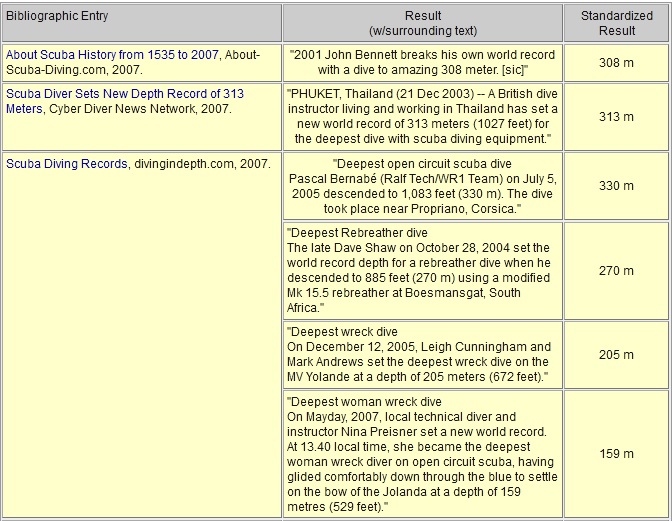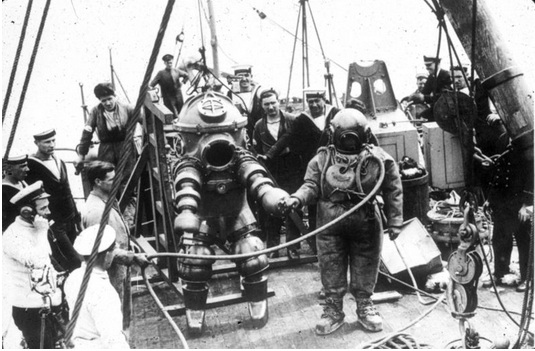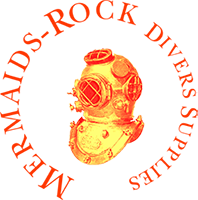Depth Of The Deepest Dive With Breathing Apparatus


SCUBA diving is defined as diving underwater with a self-contained Breathing Apparatus. Scuba divers use tanks of compressed air which allow the scuba diver to stay underwater for long periods of time, with the use of breath-holding techniques similar to those used in free diving and snorkeling. Scuba divers usually wear fins on their feet which allow them to maneuver underwater much easier; however, scuba divers also use scooters called DVP (Diver Propulsion Vehicle).
"SCUBA" is an acronym for "Self Contained Underwater Breathing Apparatus" and it has become acceptable to call scuba apparatus simply SCUBA. SCUBA usually refers to in-line open circuit equipment which contains compressed gas that is inhaled from the tank or tanks which the diver has on his or her back and then exhaled into the water. Rebreathers also fall under the SCUBA category because they are also self-contained systems, but rebreathers are both semi-closed and closed circuit.
There is also diving in which the diver is dressed in a air tight canvas diving suit with a large bronze, brass, or copper helmet and most importantly the a hose that will supply air to the diver with the help of a air pump at the surface. This type of diving apparatus is usually called hard-hat equipment or standard diving suit and it isn't Scuba because it relies on surface air in order to function.

ADS suit pictured on the left and a standard diving suit on the right. (Source: wikimedia.org)
In order to perform dives to deepest of more than 300 feet a diver would have to use a Atmospheric Diving Suit (ADS) which is a suit that looks like a suit of armor, but actually is a complicated peace of technology that has pressure joints which allow movement to take place at great depths with the maintenance of the internal pressure of the suit which is atmosphere. The ADS can be safely used for dives up to 600 meters and it removes a lot of dangers to the diver like the need to decompress is not needed, no special gas mixtures are used, there are no dangers of nitrogen narcosis or decompression sickness. The deepest dives with breathing apparatus were preformed in these ADS suits for at around the depth of 40 meters nitrogen narcosis which is also called rapture of the deep kicks in nitrogen narcosis is caused by the narcotic effects of air's nitrogen at high pressure. Nitrogen narcosis creates a loss of judgment and memory which is very dangerous when underwater. Hard-hat divers are also affected by nitrogen narcosis but only at around 61 meters underwater.
Vladimir Shumovych -- 2007
Bibliographic Entry
Open Water Sport Diver Manual. 4th ed. Englewood, Colorado: Jeppeson, 1986: (2-41)-(2-42), (2-29).
"Beyond 100 feet, nitrogen narcosis can affect your ability to think and make judgments; at 150 feet, you may become somewhat dizzy. Between 200 and 250 feet, you may be unable to communicate or perform simple motor or mental tasks, and below 250 feet, the average diver is more or less useless and becomes a safety menace to himself and others. [see diagram below]"
76 m
"No one knows exactly how much pressure the human body can withstand, but it is deeper than 1,500 feet."
457 m
Heilman, Christine. "Deepest Dive". The Guinnes Book of Records. 35th ed. 1996.
"The record dive with scuba gear is 437 feet, by John J. Gruener and R. Neal Watson off Freeport Grand Bahama on October 14, 1968."
133 m
Ange, Michael. What's In Your Tank? Scuba Diving Magazine. Oct. 2004. 22 May 2005.
"For example, a 30 percent nitrox mix on a dive to 132 feet would result in a PPO2 of 1.5, or a maximum single dive exposure of 120 minutes. However, if the diver's cylinder contained 32 percent oxygen, he would experience a PPO2 of 1.6. This significantly decreases his safe exposure to just 45 minutes."
40 m
Sanchez, Carmen. South Africa woman breaks world scuba diving record. Cyber Diver News Network. 25 Oct. 2004. 22 May 2004.
"Another South African, Nuno Gomes, recently tried to set a new world record for the deepest scuba dive but failed with a dive of "only" 271 meters, well short of the planned maximum depth of 320 meters and the current record of 313 meters set by Mark Ellyatt in Thailand on December 18, 2003."
313 m
There are two different forms of underwater diving. Someone can dive while holding their breath and surfacing when needing air, or they can use a breathing apparatus. This style of underwater diving is known as SCUBA diving (Self- Contained Underwater Breathing Apparatus). Scuba divers use an air tank, which allows them to stay underwater for a longer period of time.
The first breathing apparatus was invented in 1771 by a British Engineer. It was an air pump was used a hose to connect to the helmet of the diver. Jacques Cousteau co-invented the aqualung, developed a one-person, jet-propelled submarine and helped start the first manned undersea colonies. He designed the modern day scuba diving gear, the demand regulator and the diving suit. Over the years, the breathing apparatus developed into the oxygen tank, which is easier to use, safer, and allows the diver to travel to deeper depths.
In 1917, a man by the name of Draeger produces an enriched air rebreather with a depth limit of 130 feet (40 meters). On October 14, 1968, two men by the names of John Gruener and R. Watson set a new scuba record of 437 feet (133 meters). No one knows that exact depth and pressure the human body can withstand while scuba diving, but it is deeper than 1,500 feet (457 meters). No one is going to reach that depth while scuba diving because of various symptoms. Beyond 100 feet (30 meters), nitrogen narcosis affects someone's ability to think and at 150 feet (46 meters), they may become dizzy. Once a diver reaches 250+ feet (76+ meters), they are considered useless and become a safety hazard to themselves and people around them.
The latest attempt to break the scuba record was by Nuno Gomes, who planed to dive to a depth of 320 meters, but was only able to reach 271 meters. The record is currently held by Mark Ellyatt of 313 meters which was set on December 18, 2003.
Michael Calamera -- 2005
LATEST ARTICLES
- “El Buzo,” or “The Diver,”... Statue... Mexico.
- Dive Into History
- Depth Of The Deepest Dive With Breathing Apparatus
- A BRIEF HISTORY OF DIVING: FREE DIVERS, BELLS AND HELMETS
- Saturation Diving Technique
- 20,000 lies under the sea ... The fishy world of Jacques Cousteau
- Royal de Luxe ... The Giant Diver Mechanical Marionette
- Europe's first underwater museum opens off Lanzarote
- Cousteau legacy still making a splash
- In Memoriam | Bob Kirby: 1933-2022
- The COMEX Story
- 10 Things No One Tells You Before You Become A Deep Sea Diver
- Diving Suits through History
- Training And Qualifications in Commercial Diving
- Australia’s deepest ever commercial dive leads to brain injuries, mental scarring


